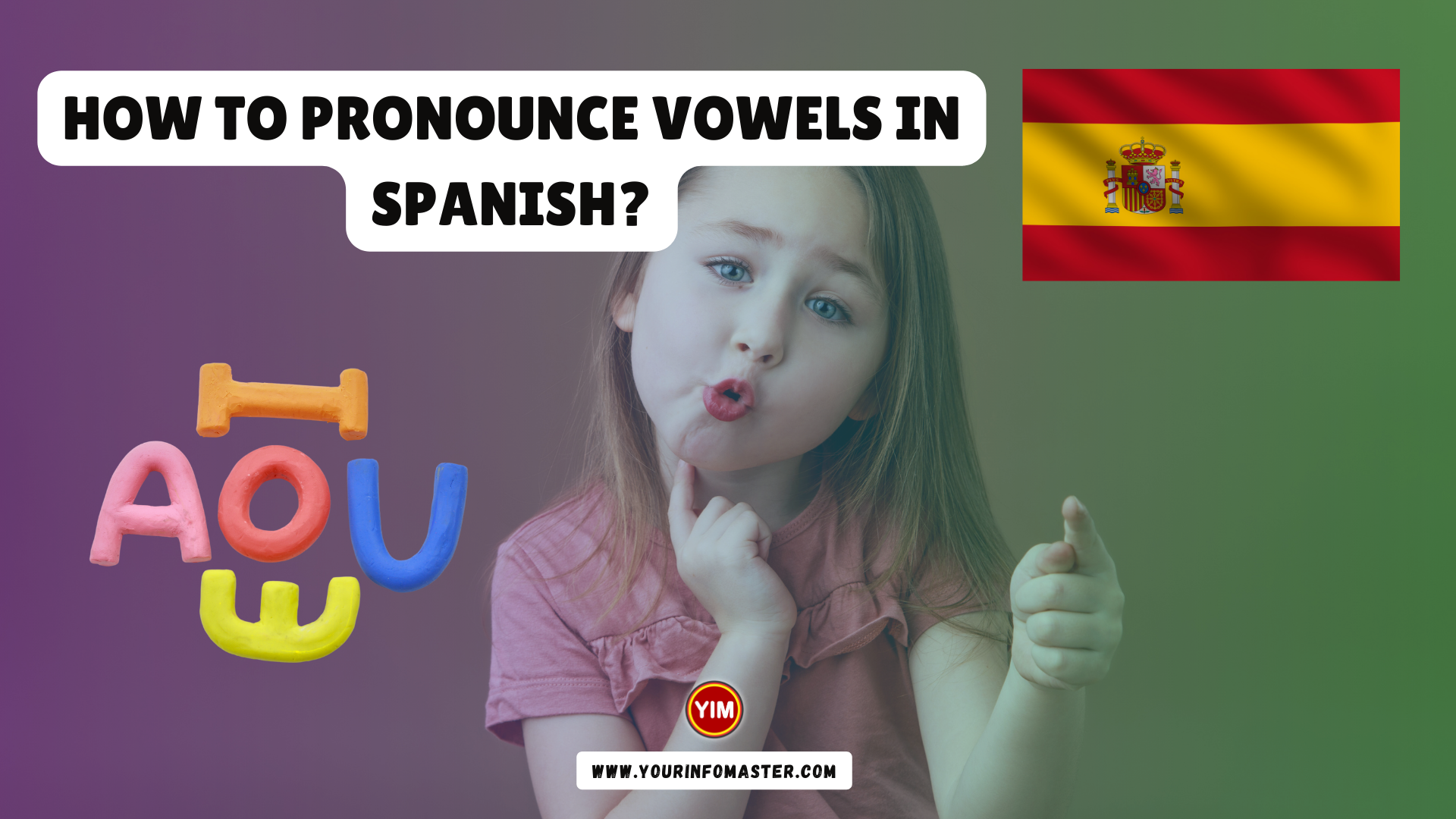How To Pronounce Vowels in Spanish? Embarking on the journey of learning Spanish pronunciation brings us to the realm of vowels, the building blocks of spoken language. While many Spanish vowel sounds may be familiar to English speakers, their distinctive characteristics and consistent pronunciation patterns in Spanish add depth to the linguistic experience.
Through this exploration, we’ll unravel the nuances of Spanish vowels, helping you forge a clear and authentic pronunciation that will enhance your communication skills in the language.
Check also: Spanish Verb Pasar Conjugation
Key Points: Pronouncing Vowels in Spanish
Spanish vowels have cleaner sounds compared to English. The vowel sounds in Spanish remain consistent regardless of stress, except for e and the occasionally silent u.
Due to their purity, Spanish vowel sounds are usually shorter than in English.
Successive Spanish vowels create diphthongs or triphthongs, consisting of two or three vowel sounds blended together.
Pronouncing the 5 Vowels in Spanish
Here’s a simplified version of the information about Spanish vowel pronunciation:
A: Sounds like the “a” in “father” or “o” in “loft.” Examples: madre, ambos, mapa.
I: Similar to the “ee” in “feet” or “e” in “me,” but shorter. Examples: finca, timbre, mi.
O: Pronounced like “oa” in “boat” or “o” in “bone,” but shorter. Example: teléfono, amo, foco.
E: Mostly like “e” in “met” within words. At the end, it’s like the Canadian “eh” or a shortened “é” in “café.” Examples: café, compadre, enero.
U: Like “oo” in “boot” or “u” in “tune.” Examples: universo, reunión, unidos. Silent in gui, gue, and after q. Examples: guía, guerra, quizás.
Remember, grasping the distinct sounds of Spanish vowels will significantly improve your pronunciation and help you communicate more effectively in the language.
Diphthongs and Triphthongs
Diphthongs and triphthongs in Spanish involve blending two or three vowels to create a single sound. Just like in English, this happens when certain vowel combinations are rapidly pronounced together. For instance, when u is followed by a, e, i, or o, it sounds like the “w” in “water.”
Examples include cuaderno, cuerpo, cuota. The combination ai sounds like the sound of “eye.” Examples: hay, airear. When i is followed by a, e, or u, it’s somewhat like the “y” in “yellow”: hierba, bien, siete. Other combinations like miau, Uruguay, caudillo are also possible. Mastering these patterns contributes to improved Spanish pronunciation.
Check also: Spanish Verb Trabajar Conjugation
What To Avoid in Pronouncing Vowels in Spanish?
For English speakers aiming for accurate Spanish pronunciation, it’s important to recognize that certain English vowel sounds are not as clear-cut as they might appear. Specifically, when paying attention, you might detect that the vowel sound in “foe,” particularly in slower speech, carries a “oo” sound at the end, making it akin to “foh-oo.” In contrast, the Spanish o retains solely the initial “oh” sound.
Moreover, the Spanish u should never be articulated like the “u” in “fuse” and “united” in English.
How to Pronounce ‘Y’ and ‘W’ in Spanish
Ordinarily, the y in Spanish is spoken just like it would be if it were an i, part of a diphthong. For instance, rey, soy, yacer. Some words borrowed from English with a y at the end often maintain the English pronunciation. For example, in popular songs, you might encounter words like sexy and phrases like oh baby.
The w, seen solely in foreign-origin words, echoes the u sound when it comes before a vowel. Nevertheless, numerous speakers also introduce a gentle “g” sound at the start of words that initiate with a w, like whisky, sometimes spelled güiski.
Check also: Spanish Verb Creer Conjugation
Conclusion
Mastering the diverse consonant sounds of Spanish is a crucial step towards achieving clear and accurate pronunciation. While some sounds may be similar to those in English, others pose unique challenges. By familiarizing yourself with the various sounds and practicing them regularly, you can greatly enhance your spoken Spanish.
Remember, don’t be discouraged by initial difficulties; practice and persistence will lead you to confidently navigating these consonant sounds, ensuring effective communication in Spanish-speaking contexts.
If you really enjoyed the article about “How To Pronounce Vowels in Spanish?,” then I would be very grateful if you’d help it spread by emailing it to your friends or sharing it on Twitter, Instagram, or Facebook. Thank you!
Have you read “How To Pronounce Vowels in Spanish?“ Which of these blogs are you reading, and how is it similar to one of them?
Read More
- Pronouncing Difficult Spanish Consonant Sounds
- Mastering Stress and Accent Marks in Spanish
- How to Pronounce R in Spanish?
- How to Write Months in Spanish?
- Spanish Cell Phone and Social Media Abbreviations
- How to Type Spanish Accents and Punctuation in Windows?
- How to Type Spanish Accents and Punctuation on a Mac?
- How to Use Hyphens in Spanish?
- What are Spanish Greetings?
- Spanish Strong Vowels and Weak Vowels







